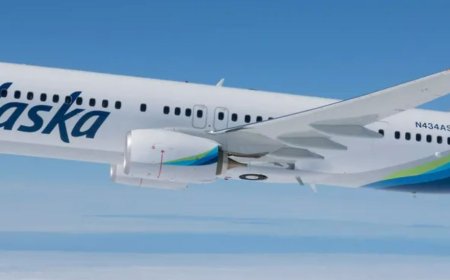Battle Birds was an American pulp magazine about air warfare
"Battle Birds" was an American pulp magazine that focused on stories about air warfare. It came out during the heyday of pulp fiction and had exciting tales about brave pilots fierce dogfights, and the exploits of top-notch aviators.

Battle Birds was an American air-war pulp magazine that Popular Publications put out. It hit the shelves in late 1932 and got a new look in 1934 as an air-war hero pulp called Dusty Ayres and His Battle Birds. Robert Sidney Bowen, a well-known pulp writer, wrote the main novel each month, along with the short stories that filled the rest of the issue. Bowen set his stories in the future where an Asian empire known as the Black Invaders threatened the United States. This change didn't catch on as much as they hoped so they stuck to the original year-long plan. In an unusual move for pulp fiction, Bowen wrote a novel where Dusty Ayres beat the invaders bringing the series to an end. The magazine stopped printing with the July/August 1935 issue. It came back in 1940 using its original name, Battle Birds, and kept going for another four years. Frederick Blakeslee painted all the cover art.
Publication history
In the middle of 1927, Aviation Stories and Mechanics hit the shelves. This magazine broke new ground by focusing on flying fiction. Pulp magazine expert Robert Sampson thinks Charles Lindbergh's Atlantic crossing in May that year sparked people's interest in aviation. Soon after similar magazines popped up, including Air Stories and Wings, which centered on flying adventures. Dell Magazine's War Birds, which came out in early 1928, was the first to zero in on aerial warfare. In 1930, Harry Steeger and Harold Goldsmith started Popular Publications. Their new company rolled out four pulp magazines that year, one being an air-war pulp called Battle Aces. In 1932, they added a second title, Battle Birds, with the first issue dated December 1932.
Contents:
To stop the new magazine from competing with G-8 and His Battle Aces, Bowen set his stories in the future where America was at war with another power. To avoid making an existing country the enemy, they chose a future Asian power that had taken over the whole world except the United States. Bowen named his hero Dusty Ayres, and they changed the magazine's title to Dusty Ayres and His Battle Birds starting with the July 1934 issue. Ayres was America's best pilot, and he fought the Asian Black Invaders with his three friends, Jack Horner, Curley Brooks and Biff Bolton. The enemy leader, Fire Eyes, wore a simple green mask with two eye slits, through which you could see sparks of fire. His top pilot, who often clashed with Ayres, went by the name The Black Hawk.
Bowen penned all the short stories for Dusty Ayres, which set it apart from other hero pulps where multiple authors provided the short fiction. The new magazine's initial success prompted Dell Magazines to make a similar change to War Birds turning it into Terence X. O'Leary's War Birds in early 1935 adding a science-fictional backdrop. However, Dusty Ayres ran for a year. Bowen wrote a final novel where the evil empire met its defeat which was unusual for a pulp series), and the magazine stopped publishing with the August 1935 issue. Mike Ashley, a science fiction historian, thinks Dusty Ayres was popular but its setting was too narrow to keep going for long. On the other hand, Robert Weinberg, another historian, believes low sales led to the title's demise. Sam Moskowitz also a historian of the genre, describes the Dusty Ayres series as "imaginative in the art as well as the stories", but feels the writing wasn't as strong as that of contemporary pulps like Operator.
The Dusty Ayres version of the magazine included a letter column, and starting in the February 1935 issue there was a competition column called "Planes of Tomorrow", to choose the best reader-submitted design for a future airplane. The magazine was relaunched in February 1940 under the original Battle Birds title, lasting for another four years in that incarnation.
The cover artist for all issues of both Battle Birds and Dusty Ayres was Frederick Blakeslee, an expert painter of airplanes who delighted in making the planes in his covers accurate, though for Dusty Ayres he was given the freedom to invent futuristic designs. Robert Lesser, in his history of pulp magazine art, comments that during World War II the air-war magazine artists "realized that they were no longer painting fiction but recording fact", and gives as an example Blakeslee's cover for the October 1942 cover of Battle Birds, which depicted the US Air Force dive-bombing Japanese aircraft carriers at the Battle of Midway.Lesser also quotes a letter to Battle Birds from a US private working as ground crew, asking for a Blakeslee painting that they could hang in their barracks for morale; according to the response in the magazine, Popular agreed and sent them a painting.
Bibliographic details:
Battle Birds was published by Popular Publications. It began as a monthly, running from December 1932 to July 1934, and remained monthly after the title changed to Dusty Ayres and His Battle Birds in July 1934. It lasted for twelve issues under the new title; the last two issues were bimonthly, dated May/June and July/August 1935. There was then a gap of several years until February 1940 when the title changed back to Battle Birds. The next issue, March 1940, inaugurated a bimonthly run that lasted until the final issue, dated May 1944, with a couple of irregularities: May 1941 was followed by August 1941, and December 1942 was followed by March 1943. The volume numbering was consecutive until the end of the Dusty Ayres period: there were seven volumes of four issues each, followed by one volume of three issues. The volume numbering restarted at 1/1 with the February 1940 issue; this time there were five volumes of four issues, and a final volume of six issues.
What's Your Reaction?



































































